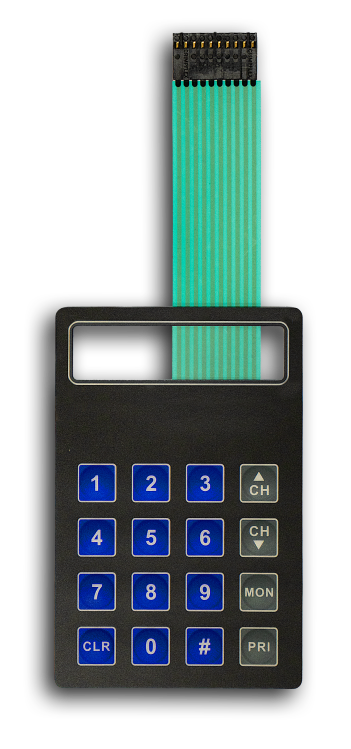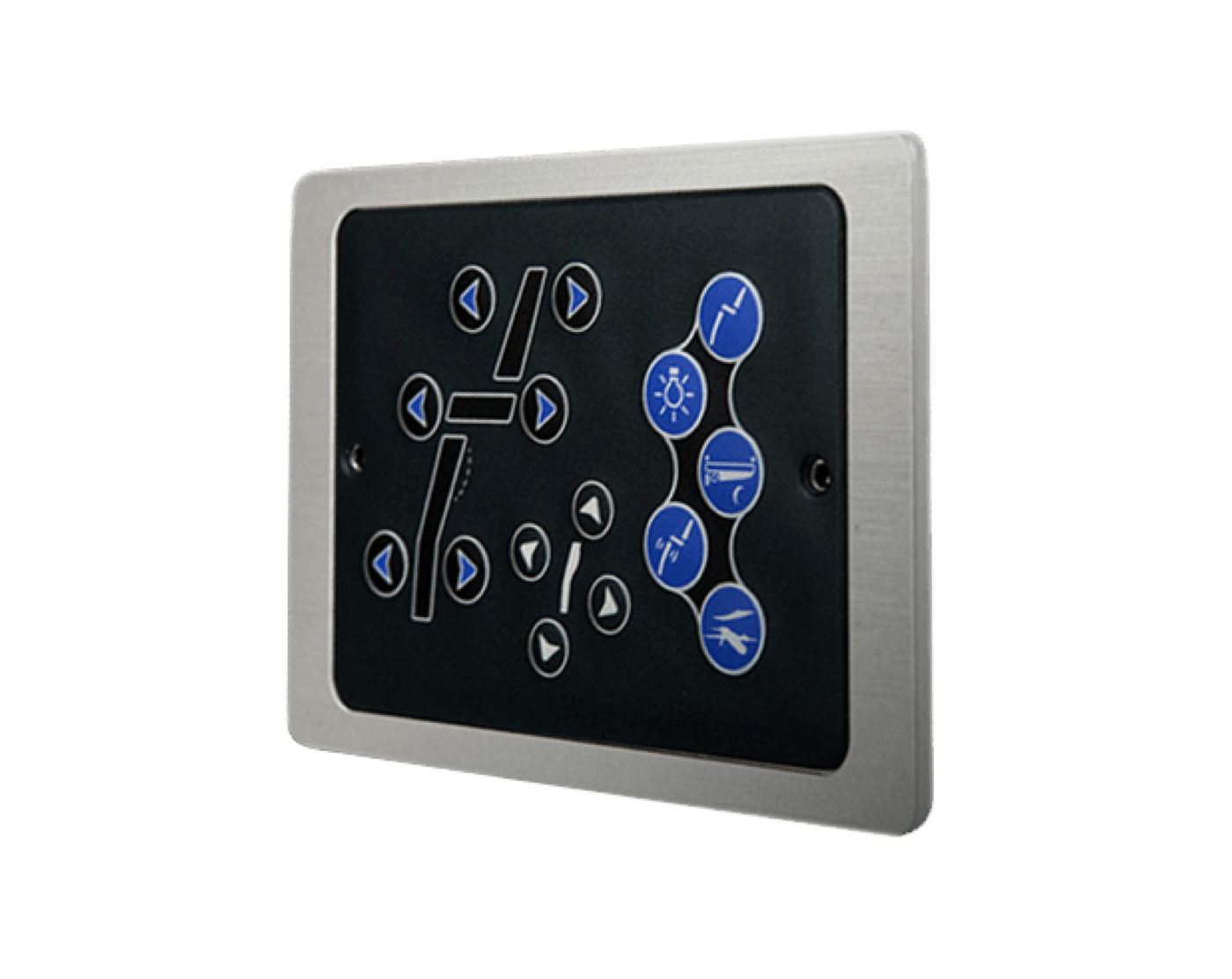Comprehending the Importance of Membrane Switches in Customer Interfaces
Membrane switches are indispensable elements in the design of reliable interface, promoting not only functionality however additionally improving visual charm and user interaction. Their unique functions, such as resistance to customizable styles and environmental elements, make them ideal for a diverse selection of applications across numerous industries. As we check out the numerous advantages and future patterns associated with Membrane modern technology, it becomes clear that these buttons are greater than just elements; they stand for a convergence of advancement and usefulness. The implications of this innovation on customer experience are worth analyzing better.
What Are Membrane Buttons?

The spacer layer, which contains adhesive properties, allows for the splitting up of the circuit layer from the overlay, making sure that the switch remains in a non-activated state till pushed. When pressure is related to the overlay, it presses the spacer layer, connecting the gap and finishing the circuit in the underlying layer. This layout not only reduces the physical room needed for conventional mechanical buttons however also boosts the longevity of the gadget, as Membrane buttons are typically immune to dirt, moisture, and various other environmental factors.
Frequently discovered in applications ranging from consumer electronic devices to clinical gadgets, Membrane buttons are indispensable to modern-day technology, supplying a easy to use and efficient user interface that aligns with modern design needs.
Advantages of Membrane Buttons
While many button innovations exist, Membrane Switches offer distinctive advantages that make them specifically desirable in different applications. Among the main advantages of Membrane switches is their small design, which permits space-saving executions in devices where realty is restricted. Their thin profile not just enhances aesthetic charm yet also assists in light-weight construction.
One more substantial advantage is their resistance to environmental aspects. Membrane switches are usually sealed against wetness, dirt, and impurities, making them perfect for use in requiring settings, such as medical devices and industrial devices. This longevity extends the lifespan of the switch, minimizing upkeep prices and boosting reliability.
Moreover, Membrane switches can be customized to satisfy certain style needs, including one-of-a-kind graphics and shades that boost customer communication. Their responsive feedback options can also be customized to provide a gratifying user experience. Additionally, Membrane switches are cost-effective, particularly in high-volume applications, as they can be produced successfully.
Applications in Numerous Industries

In the customer electronics basics field, Membrane switches are widespread in gadgets such as microwaves, washing makers, and push-button controls. Their responsive comments and aesthetic choices enhance customer experience while offering a streamlined, contemporary look. Furthermore, automotive suppliers use Membrane switches in control panel controls and infotainment systems, where area is limited, and individual engagement is important.
Moreover, the commercial sector leverages Membrane buttons in control panels for machinery and devices, permitting user-friendly procedure in typically rough environments. Their resistance to chemicals and dampness ensures durability and integrity in these applications. Generally, the flexibility of Membrane Switches adds substantially to their extensive use, making them essential in different technical domains.
Design Factors To Consider for Membrane Switches

When making Membrane switches, several essential factors to consider need to be taken into consideration to ensure ideal performance and individual experience. To start with, the selection of products is critical; index selecting resilient, premium substratums can improve the button's durability and resistance to ecological aspects such as wetness and temperature level changes.
Second of all, the style of the graphic overlay should prioritize quality and convenience of usage. Icons and text must be understandable, and the format must assist in user-friendly interaction (membrane switches). In addition, responsive comments is important; incorporating a responsive dome or various other mechanisms can boost the customer experience by offering physical confirmation of activation
An additional crucial element is the switch's electric performance. Developers need to guarantee that the conductive traces are properly made to reduce resistance and avoid signal disturbance. This involves analyzing the needed actuation force and making certain compatibility with the electronic parts they will certainly interface with.

Future Patterns in Membrane Technology
As modern technology continues to development, Membrane switches are positioned to develop dramatically, driven by developments in products and manufacturing methods. One arising trend is the consolidation of innovative materials, such as flexible substratums and conductive inks, which boost resilience and lower the overall weight of Membrane switches. These products not just improve the tactile action yet also enable for next page the layout of buttons that can withstand harsher environmental problems.
In addition, the integration of touch-sensitive technologies is transforming standard Membrane Switches right into more interactive user interfaces. Capacitive touch sensors embedded within Membrane button panels can give an extra intuitive and responsive individual experience, lining up with the expanding need for streamlined, modern-day layouts in customer electronics.
Additionally, advancements in printing techniques, such as digital and 3D printing, enable rapid prototyping and personalization of Membrane switches. This flexibility allows producers to respond quicker to market demands and consumer preferences.
Last but not least, sustainability is coming to be a substantial emphasis, with suppliers discovering green products and procedures. As these patterns unfold, the future of Membrane modern technology assures improved performance, visual appeal, and environmental duty, strengthening their role in innovative customer interfaces throughout different markets.
Verdict
Finally, Membrane Switches stand for a crucial element in the design of interface, incorporating capability with aesthetic flexibility. Their benefits, including resilience and resistance to environmental variables, make them appropriate for diverse applications throughout different industries. Thoughtful style considerations boost user communication and experience. As developments in technology proceed, the evolution of Membrane switches is anticipated to further fine-tune user interfaces, driving technology and enhancing use in a progressively intricate technological landscape.
Membrane buttons are essential elements in the layout of effective individual interfaces, promoting not just functionality however additionally boosting aesthetic charm and individual communication.Membrane Switches serve as an important element in numerous customer interfaces, facilitating a seamless interaction between individuals and digital tools.While numerous switch innovations exist, Membrane Switches offer unique benefits that make them especially preferable in numerous applications.In addition, Membrane buttons can be customized to meet specific design requirements, incorporating distinct graphics and colors that improve individual interaction.In final thought, Membrane Switches represent a vital component in the design of individual interfaces, incorporating capability with visual adaptability.